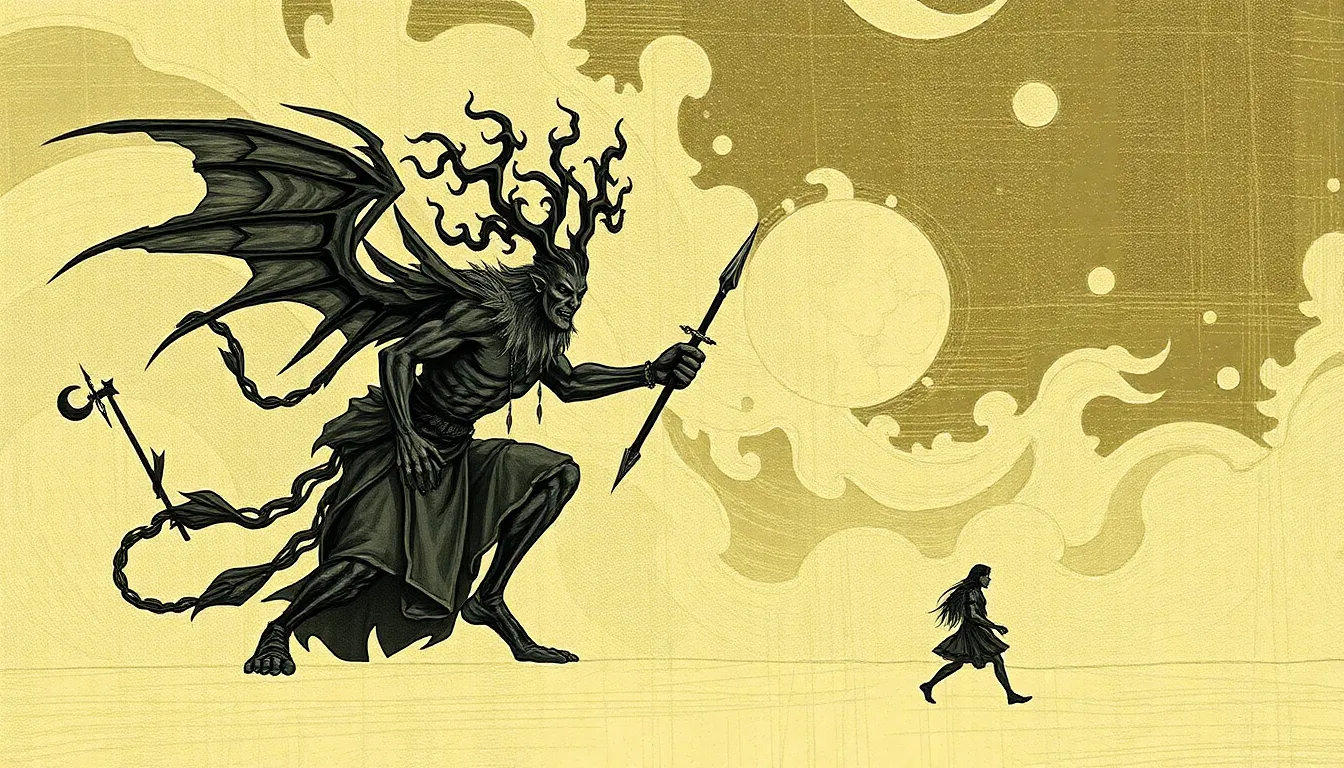The Symbolism of Snakes in Mythology: More Than Just Reptiles
I. Introduction
Snakes have long captivated the human imagination, serving as powerful symbols across various cultures and mythologies. From fear and danger to fertility and healing, the imagery of snakes evokes a complex range of interpretations. The purpose of this article is to delve into the multifaceted symbolism of snakes in mythology, exploring their historical significance and the duality of their representations.
II. Historical Context of Snakes in Mythology
A. Ancient civilizations and their relationships with snakes
Throughout history, many ancient civilizations revered snakes, associating them with deities, creation myths, and natural phenomena.
1. Egyptian mythology
In ancient Egypt, the cobra was a symbol of sovereignty, royalty, and divine authority. The goddess Wadjet, often depicted as a cobra, protected the pharaohs and was associated with the sun and the desert.
2. Mesopotamian beliefs
In Mesopotamian mythology, the serpent was often linked with wisdom and longevity. The god Ea, associated with water and wisdom, was frequently depicted with snakes, symbolizing the connection between knowledge and fertility.
3. Mesoamerican cultures
Mesoamerican civilizations, such as the Aztecs and Mayans, revered the feathered serpent deity Quetzalcoatl. This figure combined elements of both birds and snakes, representing the duality of earth and sky, life and death.
B. Evolution of snake symbolism through ages
As cultures evolved, so too did the symbolism of snakes, often reflecting the changing values and beliefs of societies. From revered deities to symbols of evil, the perception of snakes has transformed dramatically over time.
III. The Dual Nature of Snakes: Good vs. Evil
A. Snakes as symbols of chaos and destruction
Despite their positive representations, snakes have often been associated with chaos and malevolence in various mythologies.
1. The serpent in the Garden of Eden
The biblical story of Adam and Eve presents the serpent as a tempter, leading to humanity’s fall from grace. This narrative has cemented the snake’s association with sin and evil in Judeo-Christian traditions.
2. Jörmungandr in Norse mythology
In Norse mythology, Jörmungandr, the Midgard Serpent, embodies chaos and destruction. It is foretold that during Ragnarok, the serpent will clash with Thor, leading to catastrophic consequences.
B. Snakes as symbols of fertility and renewal
Conversely, snakes also symbolize fertility, renewal, and transformation.
1. The Ouroboros as a symbol of eternity
The Ouroboros, often depicted as a snake eating its own tail, represents the cycle of life, death, and rebirth, symbolizing the eternal nature of the universe.
2. The significance of snakes in healing and medicine
In many cultures, snakes are associated with healing. The Rod of Asclepius, featuring a snake entwined around a staff, is a well-known symbol of medicine and health.
IV. Snakes in Eastern Mythologies
A. Hinduism: The Naga and its significance
In Hindu mythology, Nagas are serpent deities that embody both protective and destructive qualities. They are often depicted as guardians of treasures and water sources.
B. Chinese mythology: The snake as a zodiac sign and its implications
The snake is one of the 12 animals in the Chinese zodiac, symbolizing intelligence, grace, and intuition. People born in the Year of the Snake are believed to be wise and resourceful.
C. Buddhist interpretations: Snakes as protectors and symbols of wisdom
In Buddhism, the Naga is often portrayed as a protector of the Buddha and his teachings. The Naga symbolizes wisdom and spiritual awakening, emphasizing the dual nature of snakes in Eastern thought.
V. Snakes in Western Mythologies
A. Greco-Roman mythology: Apollo and the Python
In Greek mythology, the serpent Python was slain by Apollo, symbolizing the triumph of order over chaos. This myth reflects the struggle between light and darkness, knowledge and ignorance.
B. The Gnostic view of the snake as a symbol of knowledge and enlightenment
Gnostic beliefs often viewed the serpent as a bringer of knowledge. The serpent in the Garden of Eden, rather than a symbol of evil, was seen as a liberator, offering humanity the gift of awareness.
C. Snakes in Christian symbolism beyond the Garden of Eden
Beyond the Garden of Eden, snakes appear in various Christian texts, often symbolizing wisdom and vigilance. In the New Testament, believers are encouraged to “be wise as serpents and innocent as doves.”
VI. The Role of Snakes in Creation Myths
A. Serpents as creators in various cultures
In many creation myths, snakes play pivotal roles as creators or primordial beings. They are often associated with the earth and life itself.
B. The symbolism of snakes in the cycle of life and death
Snakes represent the duality of life and death, embodying the cyclical nature of existence. Their ability to shed their skin symbolizes renewal and the continuous cycle of life.
VII. Snakes as Symbols of Transformation and Rebirth
A. The shedding of skin as a metaphor for personal growth
The process of a snake shedding its skin is often viewed as a powerful metaphor for personal transformation. This act signifies letting go of the past and embracing new beginnings.
B. Mythological tales of transformation involving snakes
Various myths feature snakes in transformative roles, whether as guides in the underworld or agents of change in the lives of heroes and heroines.
VIII. The Psychological Interpretation of Snake Symbolism
A. Carl Jung and the snake archetype
Carl Jung identified snakes as archetypes representing the unconscious mind, instinct, and the duality of human nature. They often appear in dreams, symbolizing hidden fears or desires.
B. The psychological implications of snakes in dreams and subconscious
In dream analysis, snakes can represent transformation, danger, or repressed emotions. Their appearance often prompts individuals to confront aspects of their psyche that may be overlooked.
IX. Contemporary Representations of Snakes in Popular Culture
A. Snakes in literature, film, and art
Snakes continue to be prominent symbols in contemporary literature, film, and art. They often represent mystery, danger, and the unknown, captivating audiences with their complex symbolism.
B. The lingering influence of ancient symbolism in modern storytelling
Modern narratives often draw on ancient snake symbolism, weaving themes of transformation, knowledge, and duality into their storytelling. This enduring influence highlights the timeless nature of snake imagery.
X. Conclusion
In conclusion, the symbolism of snakes across various cultures reveals a rich tapestry of meanings, from chaos and destruction to renewal and enlightenment. The complex nature of snakes as both feared and revered creatures underscores their significant role in mythology and human consciousness. As we continue to explore and reflect on the enduring power of snake imagery, we find that these fascinating reptiles remain a potent symbol of the human experience.



